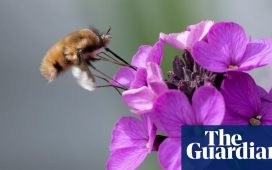A roadkill buzzard has come our way; its head damaged in the collision, its eyes bloody with the shock of a devastating deceleration. Hard to look at, but also an opportunity, especially for my son. Sometimes you need to get your hands on something to appreciate its wonder.
Cradled in my arms, the bird seems compact, light and deceptively fragile. But when we open the wings, it is transformed.
“Woah!”
My son says it, but we’re both thinking it – no matter how many times you see it happen, the unfolding span seems impossibly huge. The smoothness and elasticity of the joints, the stretch and recoil is close to miraculous, and we work the trick again and again.

He’s been taught about aerofoils at school, but it’s not an easy shape to understand in two dimensions. Here, though, it all makes sense – air being forced to slide faster over the upper curve so that it offers less resistance than the slower, bolstering air below.
We see how the wing feathers stack and slide with barely a snag, and when a small glitch does occur and the barbs of a feather catch and pull apart, all it takes is one stroke of a finger (or a careful swipe of a beak) to zip them back up again.
The plumage that most captivates is on the undersides of the wings, the breast and the “armpit”. Its depth and softness provide insulation to large surface areas exposed hour after hour to cold rushing air. But the delicacy and variety of these feathers is unbuzzardly, somehow: they are sienna and russet and a dozen shades of not-quite-white, spotty and banded like the patterns in a multipack of underwear, and just as intimate. A reminder that even the fiercest of hot-blooded creatures needs cosseting.
We pluck a few feathers – and it’s a grim process because they do not succumb easily to such indignity, and their strength is another amazement.
He suggests that we might make quills from the larger ones and we talk about pens made from feathers, oak gall ink, paper from trees, and how from all that wildness came the written word.







